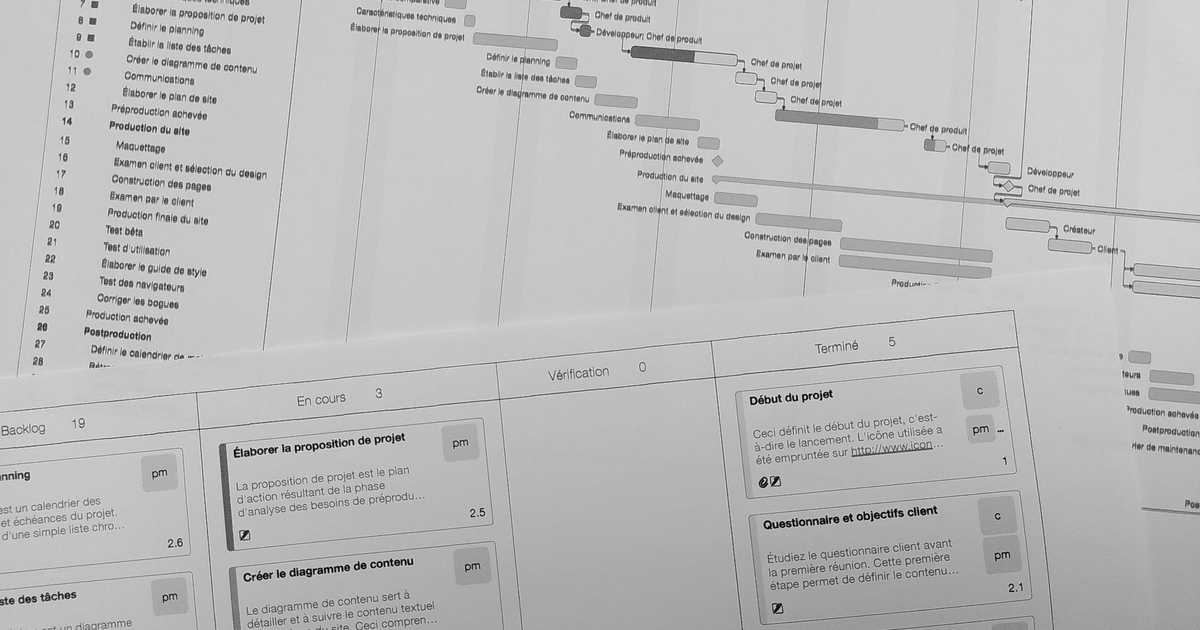Why do organisations have everything to lose by neglecting to manage their project portfolio?

Project portfolio management is often neglected, if not totally absent, in many organisations. The most common justification given is lack of time or the complexity of such an approach, whereas in reality it is often a question of a lack of awareness of the importance of this aspect in running an organisation. Why does an […]
How do you manage time and cost overruns on your projects?

Among the many challenges faced by project managers, time and budget overruns stand out as one of the most frequently encountered problems. These overruns can compromise the success of a project and have a significant impact on your organisation and its stakeholders. How can project managers overcome these obstacles to achieve the desired end result? […]
Interview with Michel Burla, Director of the Oils & Fats Division, Centravo Group

Can you introduce yourself, your organisation and your role in it? My name is Michel Burla, and I have been in charge of the Oils and Fats segment of the Centravo Group since 2019. This segment is based on two sites, an oils and fats refinery in Lyss (BE) and a margarine factory in Mitlödi […]
Why isn’t anyone using the potential of the Project Management Triangle?

What does the Triangle represent? The Project Management Triangle, sometimes called the Magic Triangle, is a universally recognised concept. There are various interpretations of it, but they all reflect the major constraints that frame a project. Here, I will use a representation of the Triangle that illustrates four constraints common to all projects: Result, Time, […]
How can you successfully estimate time and costs?

The challenge of each estimate is to identify the most realistic value possible, so that at the end of the project, the difference between the estimated value and the actual value is as small as possible. To get as close as possible to this realistic value, I use the following approach: The pi-figure method The […]
5 steps to choosing the right deadline management tool

One of the keys to successful projects is controlling deadlines. This requires good planning and coordination of the work needed to deliver the final results expected at the end of the project. Here are the 5 steps I use to keep my project deadlines under control.
What is the difference between the requirements specification and the product backlog?

The purpose of the specifications and the product backlog is to ensure that the final deliverable meets the needs of the customer or end user as closely as possible. It is therefore used to identify customer requirements and to structure the work to be done to achieve the final deliverable. So it’s the same thing, […]
From engineering to organisational intelligence: The journey of Prefix’s founder

From a technical world to a facilitative posture In the early years of my career, everything followed a fairly linear path: a degree in microengineering from EPFL, technical roles in Switzerland and Australia, spanning research and product development. It was solid, stimulating, coherent… but incomplete. Upon returning to Switzerland, a shift began. Joining a consultancy […]
SOLAR IMPULSE
CONTEXT Solar Impulse was founded in 2004 with the ambition to realise the first round-the-world flight with an airplane propulsed with solar power only. The project took place in two phases. The first phase consisted in the realization of the Solar Impulse 1 airplane that proved to possibility to fly a 24h cycle using only […]
STATE OF NEUCHÂTEL
CONTEXT The administration of the canton of Neuchâtel represents more than 4’500 people, organized in 5 departments and the chancellery, the 3 government bodies and 3 supervisory authorities. ACHIEVEMENTS Vincent Huguenin-Dumittan, Head of the Cantonal Public Health Department In a complex environment and with the need to find operational and agile solutions to an increasingly […]
COLIBRYS / SAFRAN
CONTEXT Colibrys was founded in 2001 as a spin-off of the Swiss Center for Electronics and Microtechnology (CSEM), specializing in the manufacture of high-precision sensors. In 2013, the company moved its infrastructure to a new site and was integrated into the Safran Group. In 2022, Colibrys became Safran Sensing Technologies Switzerland. Moving a production site […]
F. BAUD & T. FRÜH SA ATELIER D’ARCHITECTURE
CONTEXT F. Baud & T. Früh Atelier d’architecture, created in 1990, is composed of a dozen people and has acquired, among other things, a strong experience in the integration of environmental, social and economic constraints in their projects and in the energy efficiency of buildings. The founders of the office first decided to consolidate the […]
